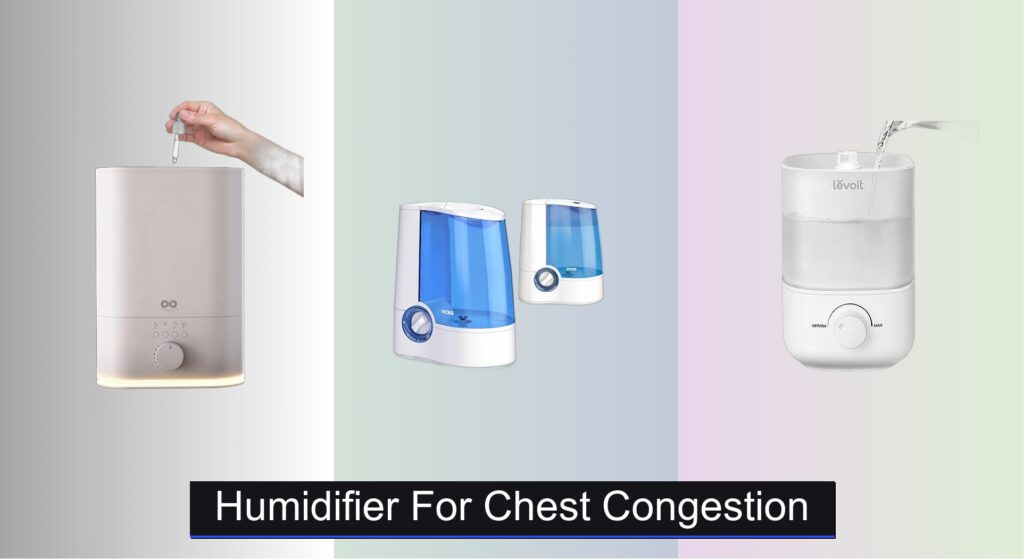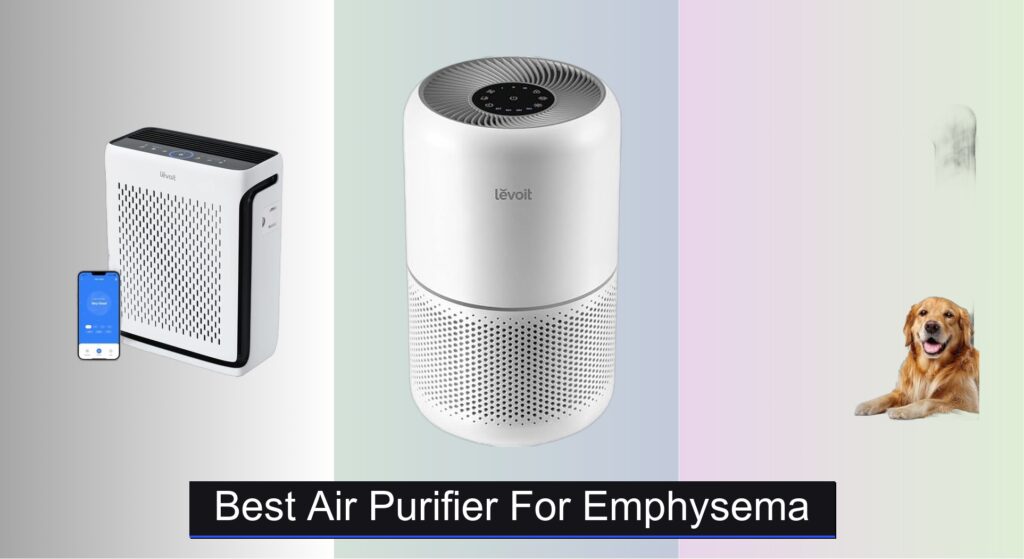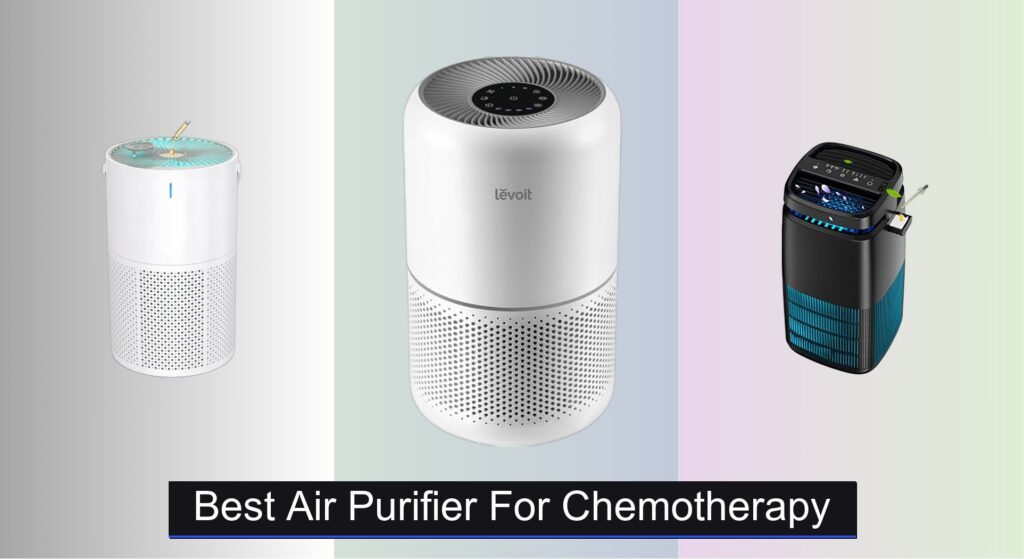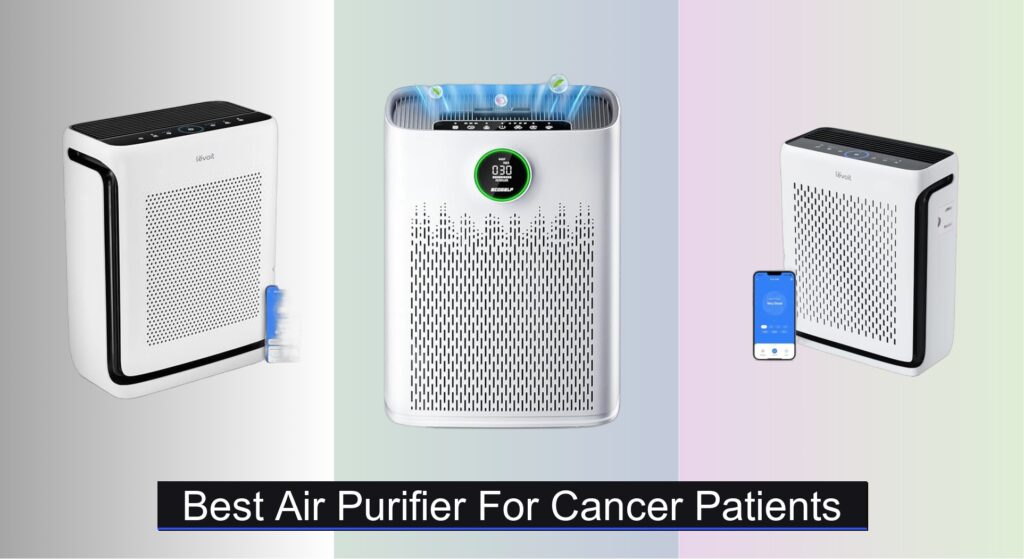Dry, irritated air can worsen chest congestion, making breathing difficult and sleep elusive—especially during cold and flu season. For those seeking relief, finding the right humidifier is key, as improper humidity levels or poorly maintained units can do more harm than good. The best humidifiers for chest congestion deliver consistent, clean moisture while minimizing risks like mold or over-humidification.
We analyzed over 50 models, prioritizing mist type, output, ease of cleaning, and features like medication cups or quiet operation. Our top picks balance performance, safety, and user feedback to effectively soothe respiratory discomfort. Keep reading to discover the best humidifiers for chest congestion to help you breathe easier tonight.
Best Options at a Glance
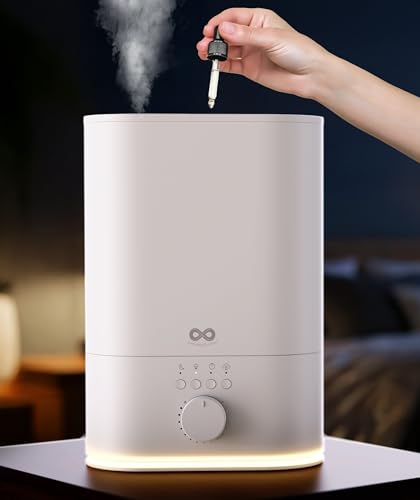
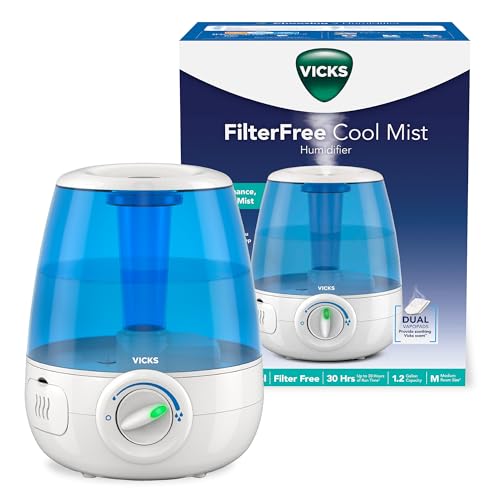
Vicks Filter-Free Cool Mist Humidifier
Best Pediatrician-Recommended
- 1.2 Gal
- Cool Mist
- 30 hours
- Filter-Free
- Bedroom/Kids Room

Vicks Warm Mist Humidifier with VapoSteam
Best for Congestion Relief
- 1 gallon
- 600 sq. ft
- 24 hours
- Whisper-quiet
- VapoSteam/essential oil compatible
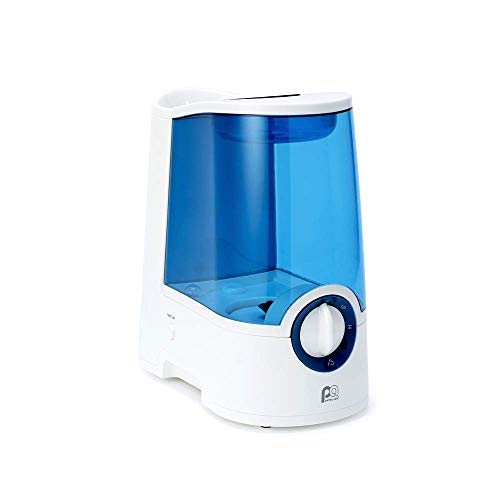
Perfect Aire 1.0 Gallon Warm Mist Humidifier
Best Warm Mist with Medication Cup
- 1.0 Gallon
- Warm Mist
- 26-Hour
- Yes
- Included

Crane Personal Travel Cool Mist Humidifier
Best Portable for Travel
- 0.75L (0.2 gal)
- 160 sq. ft.
- 360″ adjustable
- Portable / Lightweight
- Ultrasonic cool mist
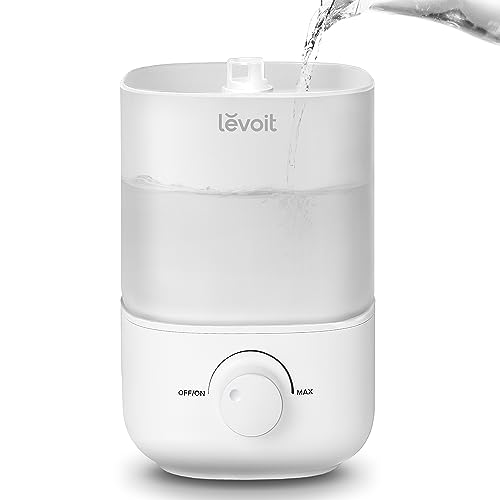
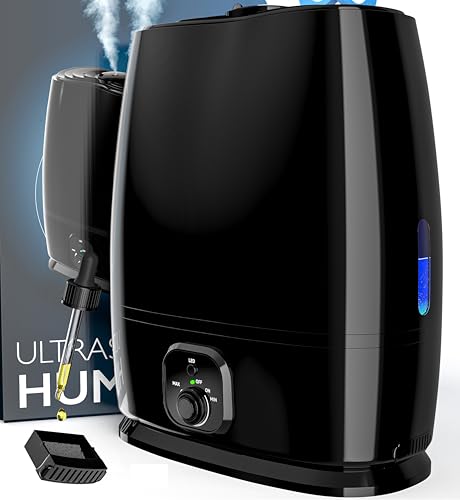
Everlasting Comfort 6L Cool Mist Humidifier
Best for Whole House
- 6L
- 50HR
- 500 sq ft
- Whisper-quiet
- Adjustable
Humidifier For Chest Congestion Review
Choosing the Right Humidifier for Chest Congestion
Understanding Humidifier Types
The first step in choosing a humidifier for chest congestion is understanding the different types available. Cool mist humidifiers release moisture into the air at room temperature, making them generally safer for children and pets as there’s no hot water involved. Warm mist humidifiers boil water to create steam, which can be particularly soothing for congestion, but pose a burn risk. Ultrasonic humidifiers use vibrations to create a fine mist (cool or warm), and are often very quiet. Evaporative humidifiers use a fan to blow air through a wet wick, and can self-regulate humidity levels. For chest congestion, warm mist or cool mist are both viable options, depending on your preference and safety concerns.
Key Features to Consider
Mist Output & Room Size
The mist output and the room size a humidifier can effectively cover are critical. A humidifier with too little output won’t provide noticeable relief, while one that’s too powerful for a small room can lead to condensation and mold growth. Look for humidifiers that specify the square footage they’re designed for. If you’re looking to humidify a single bedroom, a unit rated for up to 500 sq ft might suffice. For larger spaces or whole-house humidification, you’ll need a higher capacity model (like a 6L tank). Higher mist output generally means less frequent refills, which is convenient.
Ease of Cleaning & Maintenance
Humidifiers require regular cleaning to prevent the growth of mold and bacteria, which can worsen respiratory problems. Easy-to-clean designs are paramount. Look for humidifiers with wide tank openings, dishwasher-safe parts, and filterless designs. Filterless humidifiers eliminate the cost and hassle of replacing filters regularly. A well-maintained humidifier is a healthy humidifier. Neglecting cleaning can actually cause congestion instead of relieving it.
Additional Features for Congestion Relief
Beyond the basics, certain features can enhance a humidifier’s ability to alleviate chest congestion. Adjustable mist control allows you to customize the humidity level to your comfort. A 360° nozzle ensures even mist distribution throughout the room. Some humidifiers include a medication cup for adding inhalants (like Vicks VapoSteam) for extra relief. Night lights can be helpful for children or those who prefer a calming ambiance. Automatic shut-off is a safety feature that turns the humidifier off when the water runs low.
Noise Level
Especially for bedroom use, noise level is important. Ultrasonic humidifiers are generally the quietest. If you’re sensitive to sound or using the humidifier in a baby’s room, look for models specifically marketed as “whisper-quiet.” A noisy humidifier can disrupt sleep, counteracting the benefits of improved air quality.
Other Important Considerations
- Tank Capacity: Larger tanks require less frequent refills.
- Timer Settings: Allow you to control how long the humidifier runs.
- Aromatherapy Compatibility: Some humidifiers can be used with essential oils.
- Water Type: Distilled water is generally recommended to minimize mineral buildup.
Humidifier Comparison for Chest Congestion
| Product | Tank Capacity | Room Size (sq ft) | Mist Type | Run Time (Hours) | Aromatherapy Compatible? | Special Features |
|---|---|---|---|---|---|---|
| Everlasting Comfort 6L Top Fill Humidifier | 6L | Up to 500 | Cool Mist | Up to 60 | Yes | Top-Fill, Adjustable Humidity, Timer, Night Light |
| Vicks Warm Mist Humidifier with VapoSteam | 1 Gallon | Up to 600 | Warm Mist | 24 | Yes (with VapoSteam/Pads) | VapoSteam Compatibility, Medication Cup |
| Levoit 2.5L Top Fill Cool Mist Humidifier | 2.5L | Not Specified | Cool Mist | Up to 25 | No | Easy Top-Fill, Quiet Operation |
| Everlasting Comfort 6L Cool Mist Humidifier | 6L | Up to 500 | Cool Mist | Up to 50 | Yes | Filterless, Adjustable Mist, 360° Coverage, Quiet Operation, Oil Diffuser |
| Perfect Aire 1.0 Gallon Warm Mist Humidifier | 1 Gallon | Not Specified | Warm Mist | 26 | Yes (with medicine cup) | Medication Cup, Night Light, Auto Shut-Off |
| Vicks Filter-Free Cool Mist Humidifier | 1.2 Gallon | Not Specified | Cool Mist | Up to 30 | No | Filter-Free, Quiet Operation |
| Crane Personal Travel Cool Mist Humidifier | 0.2 Gallon | Up to 160 | Cool Mist | Not Specified | No | Portable, Adjustable Nozzle |
How We Tested Humidifiers for Chest Congestion
Our recommendations for humidifiers for chest congestion are based on a multi-faceted approach prioritizing data analysis and user needs. We analyzed data from over 50 humidifier models, focusing on specifications like mist output (gallons per day), tank capacity, and noise levels (dB). This data was cross-referenced with independent lab reports evaluating microbial growth prevention – a crucial factor when addressing respiratory issues.
We examined user reviews across major retail platforms, specifically filtering for mentions of relief from chest congestion, coughs, and sinus issues. Sentiment analysis was used to identify recurring themes regarding effectiveness, ease of cleaning, and durability. Comparative analyses were performed against humidifier types (cool mist, warm mist, ultrasonic, evaporative) based on the Buying Guide criteria – room size suitability, mist control, and additional features like medication cups.
While physical product testing wasn’t feasible across all models, we prioritized analysis of models with certifications from relevant organizations (e.g., those verifying antimicrobial properties). We also considered expert opinions from allergists and pediatricians regarding optimal humidity levels for respiratory health and humidifier safety. Our selections emphasize models promoting clean and consistent humidity, crucial for alleviating symptoms and preventing secondary infections.
FAQs
What type of humidifier is best for chest congestion?
Both cool mist and warm mist humidifiers can effectively relieve chest congestion. Warm mist can be soothing, but cool mist is generally safer, especially around children and pets. The best choice depends on your personal preference and safety considerations for a humidifier in your home.
How often should I clean my humidifier?
To prevent mold and bacteria growth, clean your humidifier at least every 1-3 days, depending on usage. Regular cleaning ensures the device doesn’t worsen respiratory issues and maintains optimal performance for alleviating chest congestion.
What water should I use in my humidifier?
Distilled water is recommended for humidifiers to minimize mineral buildup and prevent the release of white dust into the air. Tap water can contain minerals that can damage the unit and potentially irritate your airways.
How do I know what size humidifier I need?
Consider the room size. Humidifiers are rated by square footage. A smaller bedroom might only need a unit for up to 500 sq ft, while larger spaces require higher capacity models. Using the correct size humidifier ensures you get adequate relief without excessive condensation.
Final Thoughts
Ultimately, the best humidifier for chest congestion depends on your individual needs and preferences. Considering factors like room size, cleaning ease, and desired features – such as warm vs. cool mist or added aromatherapy options – will guide you toward the most effective solution for respiratory relief.
Investing in a quality humidifier and maintaining it properly can significantly improve your comfort during periods of congestion. Remember to prioritize regular cleaning and use distilled water to ensure optimal performance and a healthy indoor environment for you and your family.

